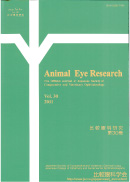Volume 30
Displaying 1-6 of 6 articles from this issue
- |<
- <
- 1
- >
- >|
Special Lectue
-
Article type: Special Lectue
2011Volume 30 Pages 1-2
Published: December 27, 2011
Released on J-STAGE: August 24, 2013
Download PDF (715K)
Original Report
-
Article type: Original Report
2011Volume 30 Pages 3-10
Published: December 27, 2011
Released on J-STAGE: August 24, 2013
Download PDF (924K)
Original Report
-
Article type: Original Report
2011Volume 30 Pages 11-16
Published: December 27, 2011
Released on J-STAGE: August 24, 2013
Download PDF (1112K)
Original Report
-
Article type: Original Report
2011Volume 30 Pages 17-22
Published: December 27, 2011
Released on J-STAGE: August 24, 2013
Download PDF (941K)
Brief Note
-
Article type: Brief Note
2011Volume 30 Pages 23-28
Published: December 27, 2011
Released on J-STAGE: August 24, 2013
Download PDF (1913K)
Case Report
-
Article type: Case Report
2011Volume 30 Pages 29-34
Published: December 27, 2011
Released on J-STAGE: August 24, 2013
Download PDF (2129K)
- |<
- <
- 1
- >
- >|
